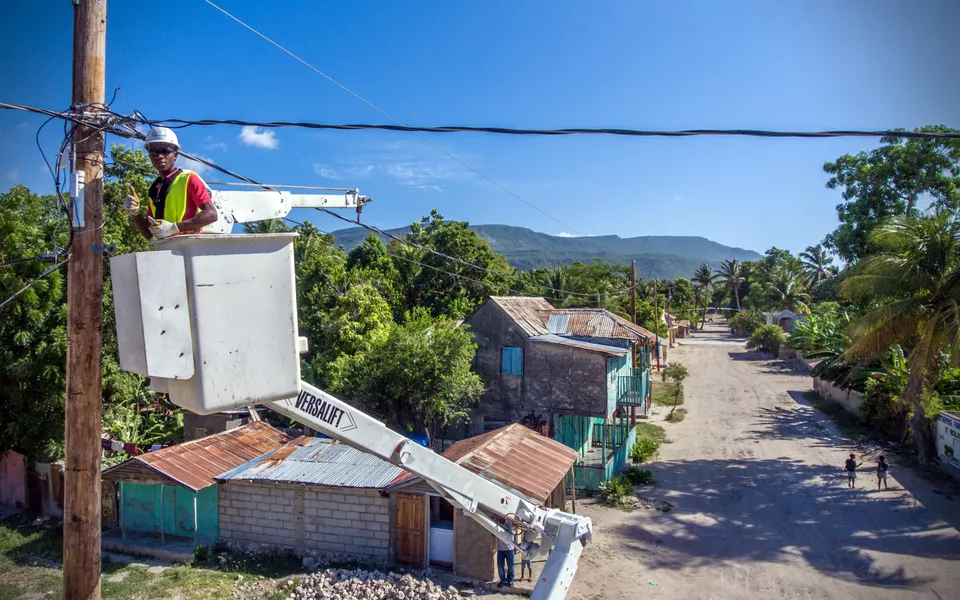
Sigora Haiti
Period
2017
Country
Haiti
Sector
Renewable energy
Financial facility
ElectriFI
ElectriFI was the first international financier to invest in Sigora in 2016 with a quasi-equity of USD 2.5 million to attract additional long-term strategic investments.
Project overview
EDFI ElectriFI committed USD 2.5 million to increase the number of Sigora customers and provide them with access to 24/7 electricity in a country where three quarters of the population doesn’t have power, and where those who do have to cope with intermittent access totalling just 5-9 hours a day.
Sigora leverages smart grid technology, pre-paid electricity, and renewable generation to tackle the near-universal challenges facing frontier market utilities: a combination of poor revenue collection owing to bill-collection rates well below 100%; energy theft; and unsustainable operational expenditures owing to outdated and labor intensive practices. The micro-utility plans to continue its deployment in the Northern province by adding another mini-grid in the municipality of Bombardopolis, interconnecting its mini-grids, and by connecting close to 10,000 active accounts by the end year. ElectriFI was the first international financier to invest in Sigora and was critical in attracting additional long-term strategic investments.
Funding objective
The micro-utility plans to continue its deployment in the Northern province by adding another mini-grid in the municipality of Bombardopolis, interconnecting its mini-grids, and by connecting close to 10,000 active
accounts by the end year. ElectriFI was the first international financier to invest in Sigora and was critical in attracting additional long-term strategic investments.
Investment rationale
EDFI ElectriFI aims to increase the number of Sigora customers and provide them with access to 24/7 electricity in a country where three quarters of the population doesn’t have power, and where those who do have to cope with intermittent access totaling just 5-9 hours a day. In Haiti, smart electric meters streamline operations, allowing the micro-utility to remotely monitor and control grid performance, identify and deter theft, and capture consumer payments electronically,
thereby overcoming the traditional challenges of keeping micro-grids working reliably and profitably. A pay-as-you-go model sidesteps revenue-collection issues related to non-payment and allows customers to purchase electricity that is directly in line with their consumption, meaning that even the smallest customer can afford to be connected and replace dirty, expensive, and dangerous alternatives like candles and kerosene with readily available, 24/7 productive power.

Read more:
Key Indicators
Financial Instrument
Quasi equity
Amount
USD 2.5 million (EUR 2.3 million)
Year
February 2017
Targeted impact – Number of beneficiaries
135,000
Targeted impact – Annual output (MWh/y)
4,543
Targeted impact – GHG avoidance (tCO2eq/y)
3,634










